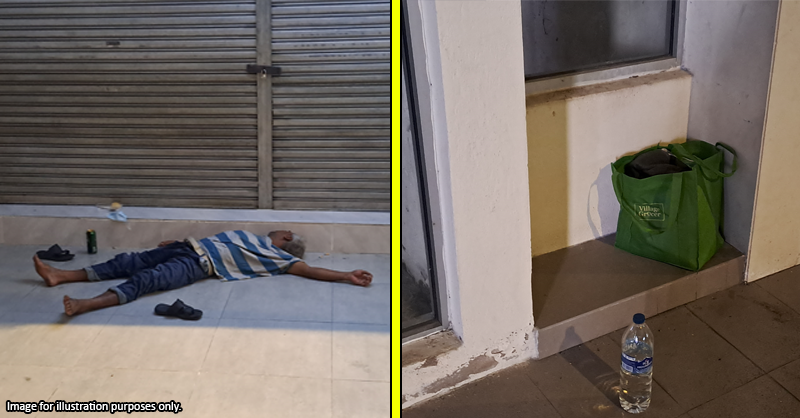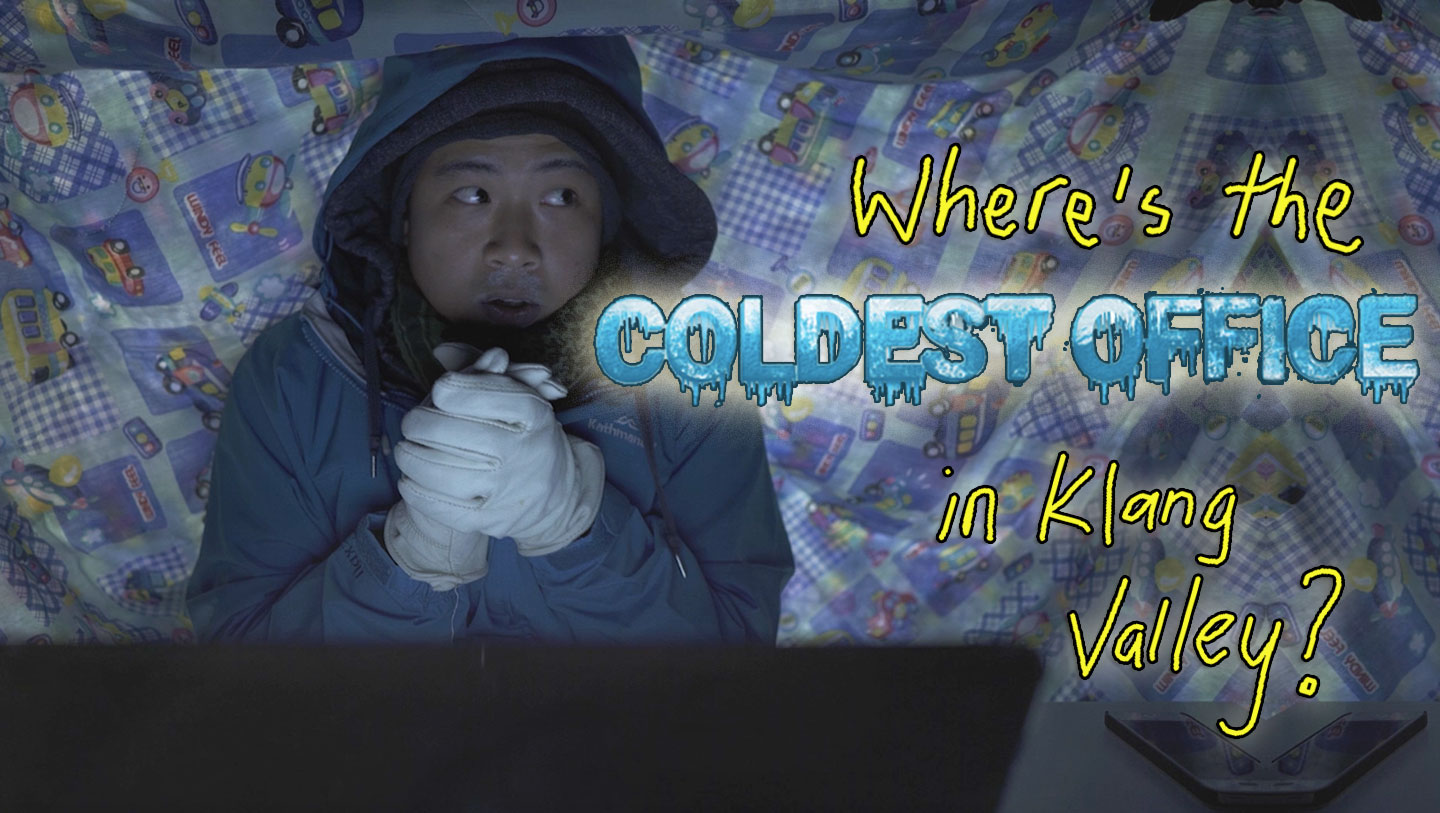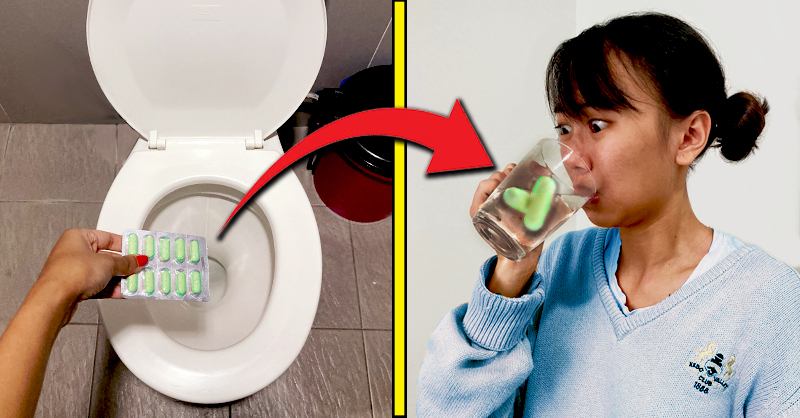Will reducing Kap Chais really reduce pollution in KL? We investigate.
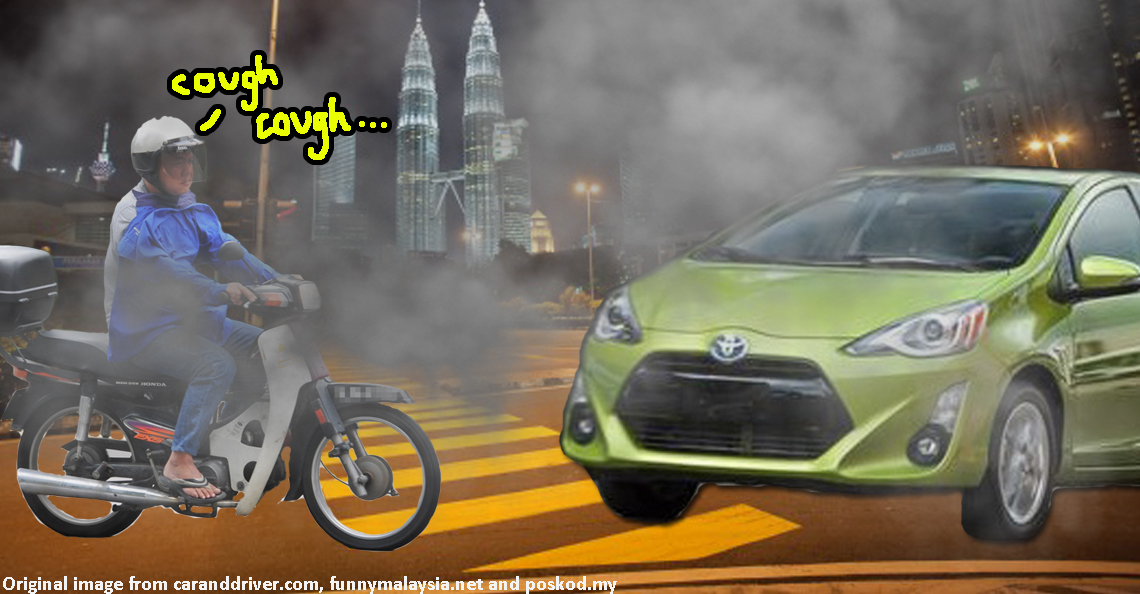
- 4.1KShares
- Facebook4.1K
- Twitter3
- Email11
- WhatsApp12
Our gomen has been expressing their environment-loving side recently. Federal Territories Minister Datuk Seri Tengku Adnan Mansor recently announced that they are considering banning underbone motorcycles, a.k.a “kap chai” bikes, from entering KL in an effort to reduce the carbon emissions.

So far, the proposed plan has not been received well by the community, particularly local businesses, unions, and of course, the bike people themselves. They mostly criticise it as being a hassle and not having cheaper alternatives.
But our gomen actually didn’t just suka-suka decide to protect the environment. This is in accordance with their pledge in the UN Framework Convention for Climate Change to cut CO2 emissions by 40%, which includes propositions to phase out RON95 and develop green technology. Experts considered our gomen’s efforts “on point” and, in fact, things were doing SO WELL that we re-pledged our cuts to 45%.

In terms of green technology, hybrid cars are currently the most accessible way to reduce your carbon footprint on the road. But kap chais don’t pollute as much as a regular cars….. or do they? We try to investigate this – with science!
How much pollution do “kap chais” and hybrids cause?
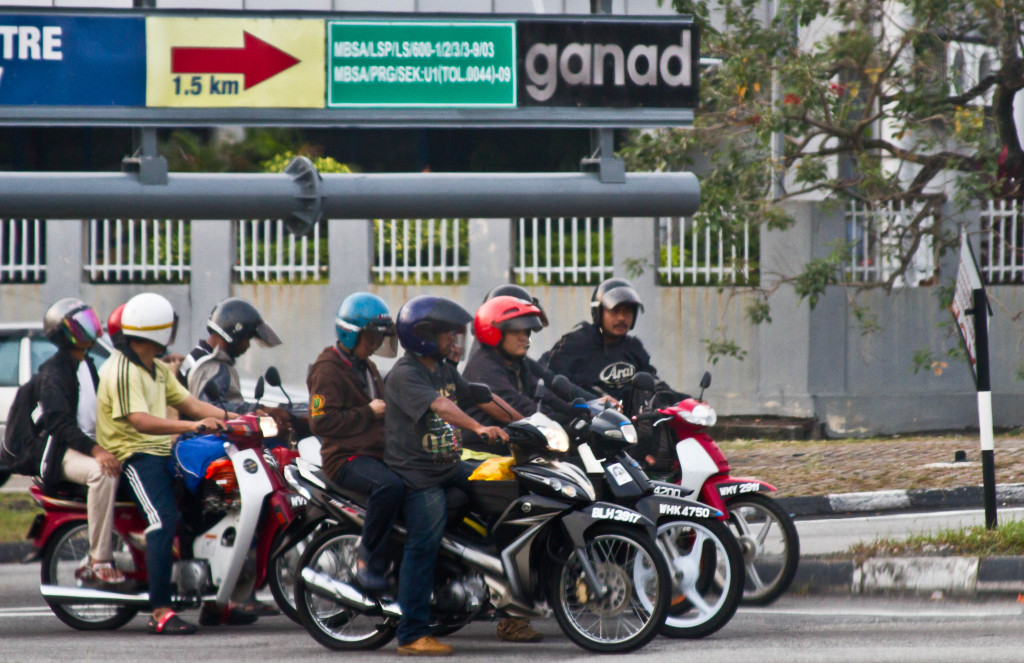
Firstly, for those who don’t know, “kap chai” is a Malaysian slang word originating from Cantonese, for underbone motorcycles, or “neh that type of motorcycle you always see on the road”. Bikes of this type is less powerful la, usually between 50 to 150 cc. That’s why it is more cheap and common, as opposed to the less popular backbone motorcycle.

On the other hand, hybrids are vehicles that can operate both on petrol and electricity, such as the Honda Insight and the Toyota Prius, and they produce less pollutants when they switch to run on electricity.
Now, lets look at who are the ones polluting our precious Malaysia.
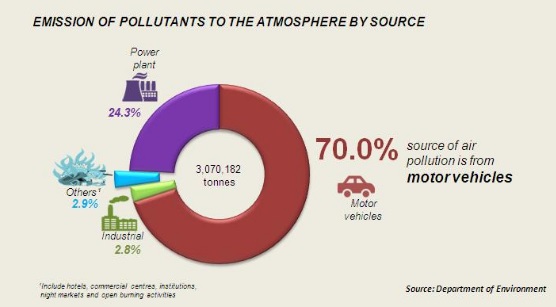
OK even though the symbol they used is a car, it actually says “motor vehicles”, so that covers vehicles like cars, lorries, motorcycles etc., so don’t bring out the pitchforks and torches just yet. Another thing to consider (if you want to nit pick) is that it says “emissions of pollutants”, but here we are only focusing on carbon emissions.
And would ya’ve guessed hybrids and motorcycles give out about the same amount of carbon?
If we compare these vehicles one to one, the verdict seems quite obvious. Comparing cars and motorcycles, the MythBusters found that motorcycles emit about 30% less carbon. But what about hybrids? Well, they emit about 31% less carbon compared to a conventional car.
It’s not really fair to compare 1 to 1 la, since it’s not only 1 vehicle contributing to pollution right? So, let us examine which type of vehicle dominates Malaysian roads. Keep in mind that these numbers are from 14 places across Semenanjung Malaysia, but NOT THE TOTAL number of cars in Malaysia.

Well looks like we can’t blame the lorries anymore. Across the peninsular, the most common type of vehicles found on our roads are cars, and motorcycles come second. So its no surprise when we found out that cars contribute about 59% of the total carbon emissions from road transportation, while motorcycles are about 11%.
So if we’re looking to cut carbon emissions, isn’t it more sound to be cutting it from cars? (͡° ͜ʖ ͡°)

We’ll talk more about the cars later, but if you’re a motorcyclist travelling in and out KL, you don’t have to worry because…
The ban won’t happen in the near future!
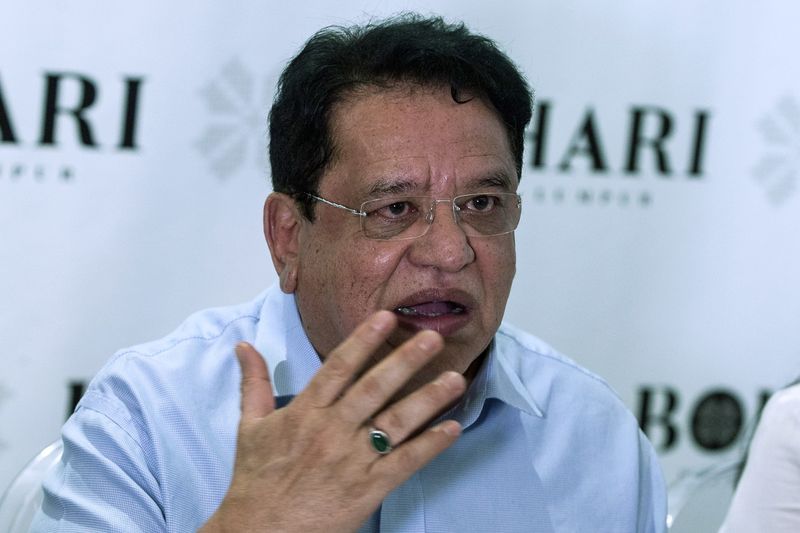
Datuk Seri Tengku Adnan Tengku Mansor says that there will be no ban for now, and his initial reveal of the ban was attached with a condition which was given less focus by people who shared the news on social media.
“Once cheaper public transport is available, we will be looking at the possibility of not allowing ‘kap chai’ motorcycles into the city,” – Datuk Seri Tengku Adnan Mansor, quoted from Malay Mail Online
Ooooohhh, now it seems more reasonable. So we wait la.
Other gomen departments may agree with cutting private transport to deal carbon problem, but also add that there’s more that needs to be taken into consideration, and proper research would be required.
“The small ones [vehicles] don’t emit that much. It’s the big ones that do. Why are we stopping the small ones? We should be stopping the big ones,” – Natural Resources and Environment Minister Datuk Seri Dr Wan Junaidi Tuanku Jaafar, quoted from The Star Online
Even Deputy Transport Minister Datuk Ab Aziz Kaprawi joined the fray, saying that most “kap chai” bikers were low-income earners, and more convenient options should be made available before a ban is considered.
We could perhaps learn from other countries. Paris plans to gradually phase out old motorcycles to combat pollution, while UK imposes a Congestion Charge (11.50 pounds a day) for those driving in London’s congestion zone during specific hours.
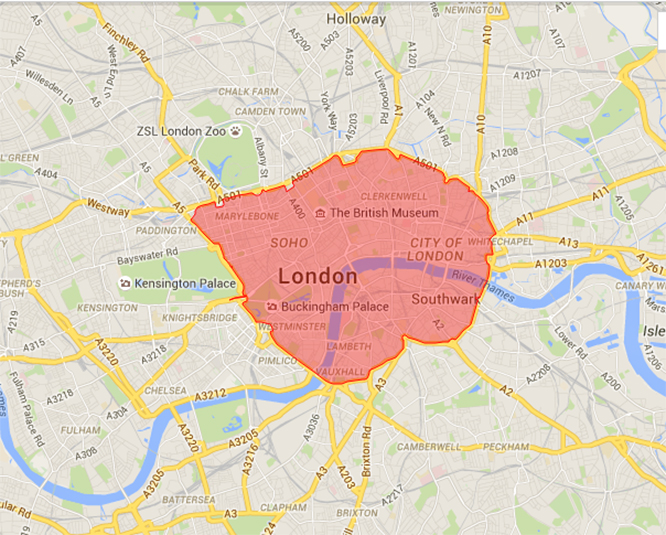
How can we accommodate millions of people entering the city everyday?
Let’s face it, the KL jams are undeniably notorious. Any Malaysian who has commuted in KL during rush hours would know the feeling of being stuck for hours, with hundreds of other cars as you painfully inch towards your destination. Traffic jams are beneficial to NOBODY, not only does it cause more pollution, it wastes precious petrol to be stuck there as well. According to the World Bank’s estimates in 2015, roughly 1.2 billion liters of fuel are wasted while idling.
So it’s not only the emission + the number of vehicles, the space that they take up and their contribution to the traffic congestion also plays a big role. Even if hybrids give out less carbon, giving every kap chai-cyclist a hybrid car is not gonna make things better, they’re still gonna take up a lot of space, so they don’t ease the jam issue.
As the Federal Territories Minister himself said:
“During the day, the population [in the city] increases to between five and seven million because workers commute to work,” – Datuk Seri Tengku Adnan Mansor, quoted from Malay Mail Online
So no matter what, people will still need to get into the city, it’s a question of how best to get them there. The following gif gives a pretty good idea as to where we should start.

The message of the gif is clear: public transport is the way to go. A good public transport system solves all the issues traffic jams create. It can carry the same amount of people while occupying less space, and at the same time it has less carbon footprint. You can read all about the benefits of public transport here (complete with academic researches!).
But before we all resolve to swearing off fossil fuels, lets consider the state of our public transport system.
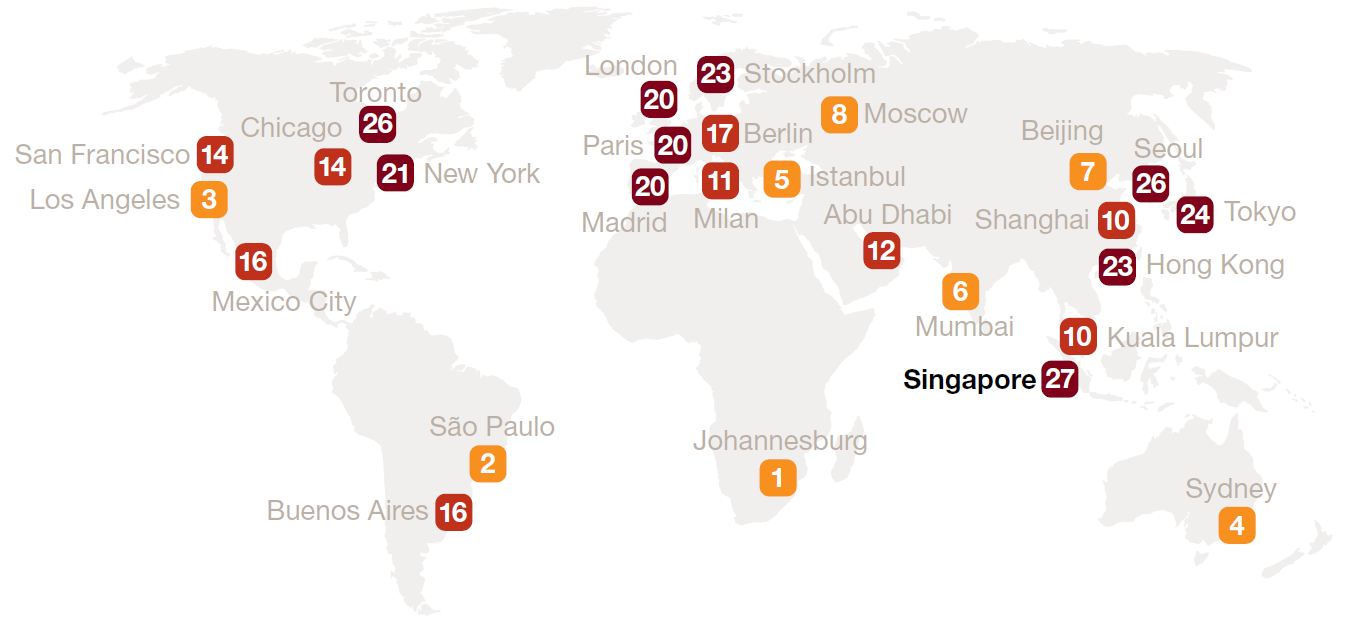
The survey is done by PwC (one of the big 4 auditors), which takes into account the coverage, price, access, development of the whole public transport system. Syukurlah we are not the worst, we got DOUBLE DIGITS summore. But why aren’t most Malaysians using public transport?
“The problems are the pricing (plz pay us moar) and the consistency of buses arriving. Sometimes you have to wait up to 30 mins for a bus to come, and it takes 1 – 1.5 hours to get home (because of the jam).” – Raymond, CILISOS intern
Another common concern is the connectivity and coverage. Sometimes you have to travel to a specific station just to switch lines, which can be inconvenient. We’ve written about the woes of public transport users last year, that was when the friggin fares were being raised.
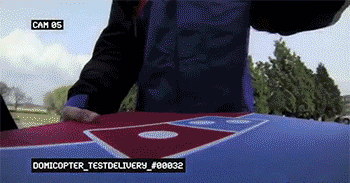
But we’re not the experts here, but there seems to be many ways to tackle the issue with less hoo-haa. It’s as our ministers said, this is a complicated issue with a lot of variables to account for. So we shouldn’t judge by which vehicles gives out the blackest smoke. But this not only involves the well-being of the environment, but also the welfare of businesses and an entire working class.
We just hope when the ban happens, drone pizza deliveries will be already in Malaysia, so our pizza doesn’t get cold from being stuck in the jam.
- 4.1KShares
- Facebook4.1K
- Twitter3
- Email11
- WhatsApp12

